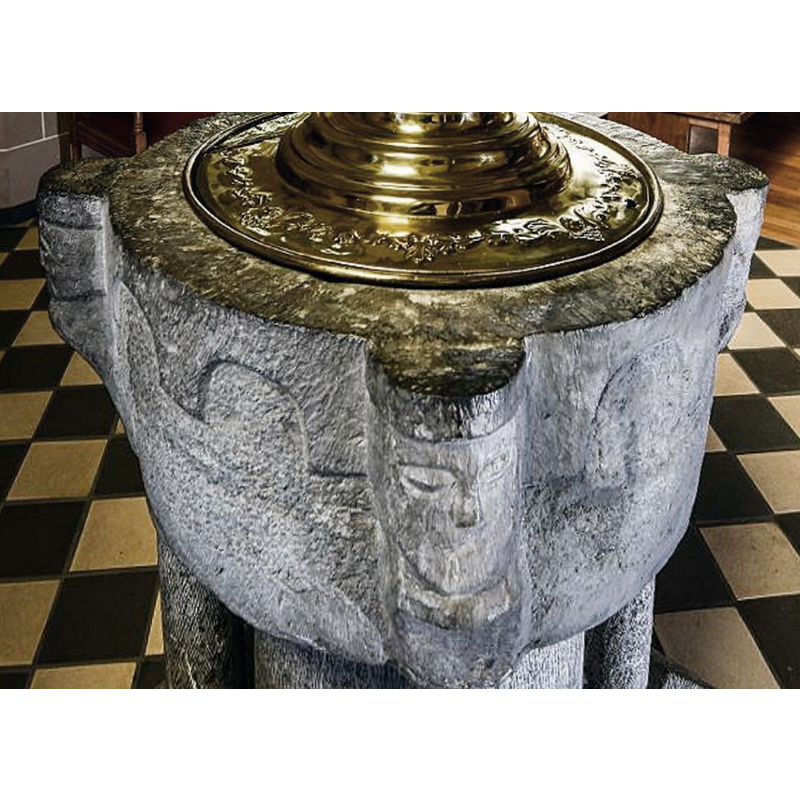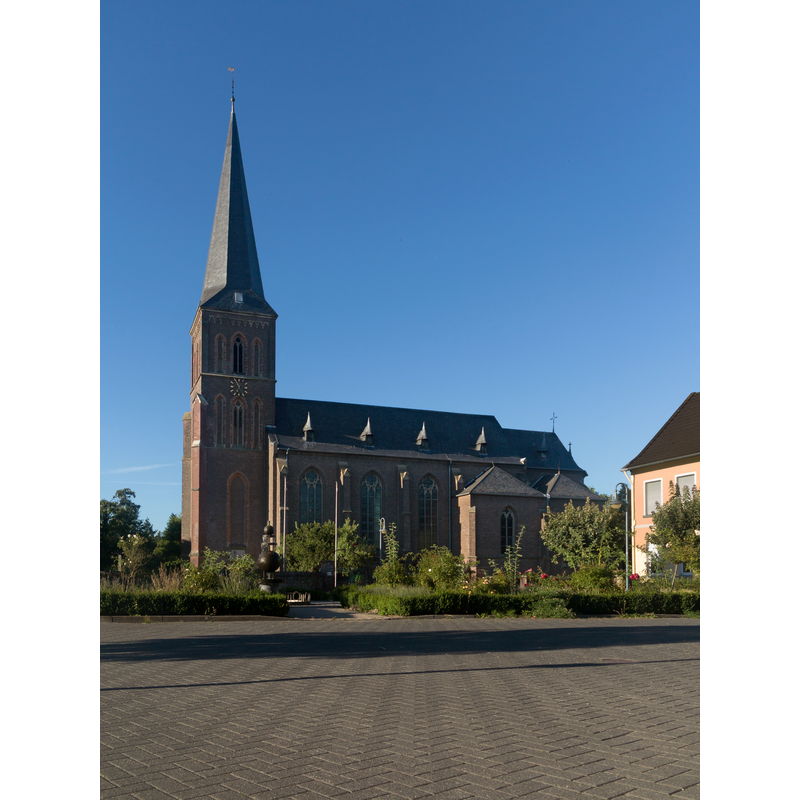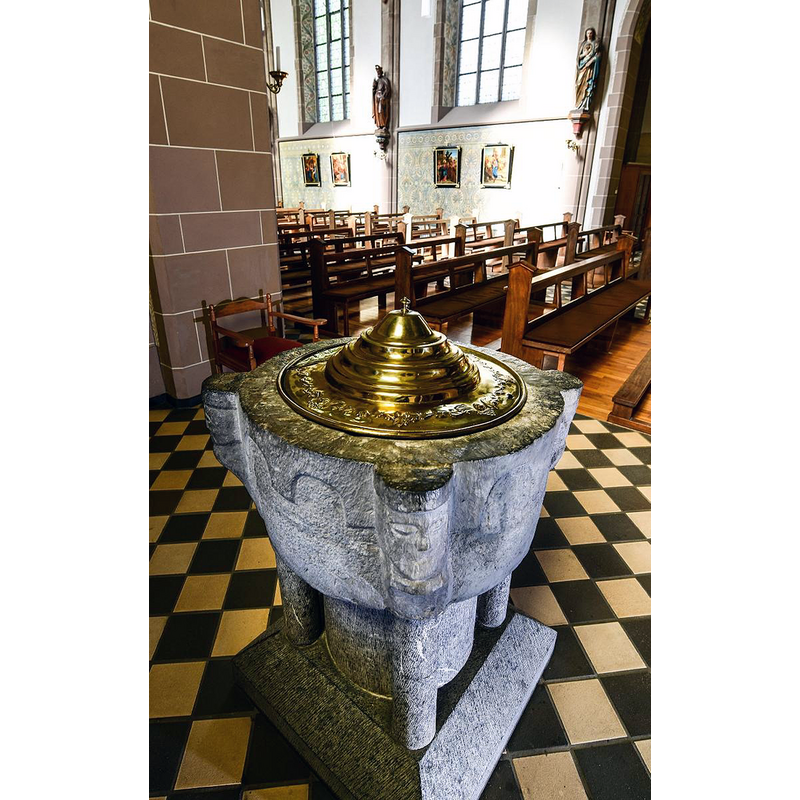Kessel nr. Goch / Kessele

Image copyright © Gottfried Evers, 2019
No known copyright restriction / Fair Dealing
Results: 4 records
design element - architectural - arch-head - round
Scene Description: all around the sides between the heads
Copyright Statement: Image copyright © Gottfried Evers, 2019
Image Source: edited detail of a digital photograph by Gottfried Evers, RP.Online edition of 11 October 2019 [https://rp-online.de/nrw/staedte/kleve/die-taufbecken-im-nordkreis-heisst-die-neue-rp-serie_aid-46403473?output=webview] [accessed 1 February 2022]
Copyright Instructions: No known copyright restriction / Fair Dealing
human figure - head - 4
Copyright Statement: Image copyright © Gottfried Evers, 2019
Image Source: edited detail of a digital photograph by Gottfried Evers, RP.Online edition of 11 October 2019 [https://rp-online.de/nrw/staedte/kleve/die-taufbecken-im-nordkreis-heisst-die-neue-rp-serie_aid-46403473?output=webview] [accessed 1 February 2022]
Copyright Instructions: No known copyright restriction / Fair Dealing
view of church exterior in context - southwest view
Scene Description: Source caption: "Kessel, katholische Pfarrkirche Sankt Stephanus"
Copyright Statement: Image copyright © Michielverbeek, 2016
Image Source: digital photograph 24 August 2016 by Michielverbeek [https://commons.wikimedia.org/wiki/File:Kessel,_katholische_Pfarrkirche_Sankt_Stephanus_Dm30_foto7_2016-08-24_18.52.jpg] [accessed 1 February 2022]
Copyright Instructions: CC-BY-SA-4.0
view of font and cover in context
Scene Description: the 13thC basin . the modern base and the 17thC font cover
Copyright Statement: Image copyright © Gottfried Evers, 2019
Image Source: digital photograph by Gottfried Evers, RP.Online edition of 11 October 2019 [https://rp-online.de/nrw/staedte/kleve/die-taufbecken-im-nordkreis-heisst-die-neue-rp-serie_aid-46403473?output=webview] [accessed 1 February 2022]
Copyright Instructions: No known copyright restriction / Fair Dealing
INFORMATION
FontID: 23714KES
Object Type: Baptismal Font1
Church/Chapel: Katholische Pfarrkirche St. Stephanus
Church Patron Saints: St. Stephen
Church Location: Kranenburger Str. 103, 47574 Goch, Germany
Country Name: Germany
Location: Düsseldorf, Nordhein-Westfalen
Directions to Site: Located off (N) the N504, in the municipality and 6-7 km WNW of Goch, about 20 km SE of Nijmegen, near the Dutch border
Ecclesiastic Region: Bistum Münster
Font Location in Church: Inside the church
Century and Period: 13th century [basin only] [composite font], Medieval [composite]
Credit and Acknowledgements: We are grateful to Pol Herman for bringing this font to our attention and for his help in documenting it
Church Notes: chapel here documented 1255; still a chapel with some sacramental ttights(?) in 1380, but a parish church by 1401; demolished 1880; present church is 3rd on this site
Font Notes:
Click to view
The Klever Heimatbund - Volksfreund 1925 informs of the remains of an old baptismal font from the 13th century being built into a wall of the sacristy, a basin made of bluestone with four heads. Werner Stalder's article Die RP berichtet in einer losen Folge über Taufsteine in Kirchen des Nordkreises Kleve. Der Taufstein in St.-Stephanus Kessel hat eine bewegende Geschichte, in the RP.Online edition of 11 October 2019 [https://rp-online.de/nrw/staedte/kleve/die-taufbecken-im-nordkreis-heisst-die-neue-rp-serie_aid-46403473?output=webview] [accessed 1 February 2022] informs of that early reference and of the rest of the 'moving' history of the font: In the 13th century, Kessel owned a chapel with parish rights, the patronage of which was transferred to the Graefenthal monastery in 1225. Like today's parish church, the chapel was consecrated to St. Stephen. A new church was built in the 15th century. During the renovation work in the sacristy, the old Romanesque baptismal font was discovered (around 1960), which was built into the sacristy wall as a water drain. It was impossible to tell exactly how far it was preserved. However, the pastor at the time, Aloys Schrey, intended to remove the baptismal font from the wall and put it back in the church. This emerges from a letter dated September 16, 1960 from the regional building councilor Cornelius to the master stonemason Ludwig Kreusch from Emmerich, Bauhütte St. Aldegundis. It says: The stonemason should endeavor to remove the baptismal font from the wall and contact Pastor Schrey. When it was uncovered around 1963, it was found that it was a Romanesque baptismal font of the Namur type, which had probably served as the first baptismal font of the St. Stephen parish. Unfortunately, the foot of the basin was lost. Another letter from Pastor Schrey to the regional building councilor shows that the pastor applied for a grant from state funds for the restoration work and the installation of the old baptismal font in the parish church in Kessel. The letter also says: After a supplementary drawing for the foot made by Ludwig Kreusch, the baptismal font was removed from the sacristy, restored and a new sandstone foot was added. On the advice of the regional building councilor, it should be set up in the tower area of the church. The baptismal water container with the baroque lid of the earlier baptismal font from the church (from around 1900) fits exactly into the opening of the restored baptismal font and thus formed a worthy conclusion to the story. The cost of removing, restoring, adding the foot and setting up the baptismal font was DM 2,317.50. Since financing such an amount was very difficult for a small community like Kessel (around 1,000 souls at the time), Pastor Schrey applied for an appropriate grant State funds. As already mentioned, the baptismal font dates from the first half of the 13th century and is the oldest piece of furniture in the Kesseler church. It was made of bluestone and the basin is 37 cm high. Four heads protrude on the four sides so that the font looks like square. A round arch frieze runs between the heads. The new foot is made of sandstone. Five pillars stand on a square base. A large column stands in the middle, four smaller columns each stand on the corners of the base and thus surround the large column. The baptismal font lid is made of brass and has a diameter of 60 cm. It comes from the 2nd half of the 17th century. On the flat edge of the lid you can find angel heads between acanthus leaves. The lid rises towards the middle.
COORDINATES
UTM: 32U 297643 5732567
MEDIUM AND MEASUREMENTS
Material: stone, limestone [basin]
Font Shape: hemispheric (mounted)
Basin Interior Shape: round
Basin Exterior Shape: round
Basin Total Height: 37 cm*
LID INFORMATION
Date: 17th century (late?)
Material: metal, brass
Apparatus: no
Notes: round decorated platform with moulded upper part

